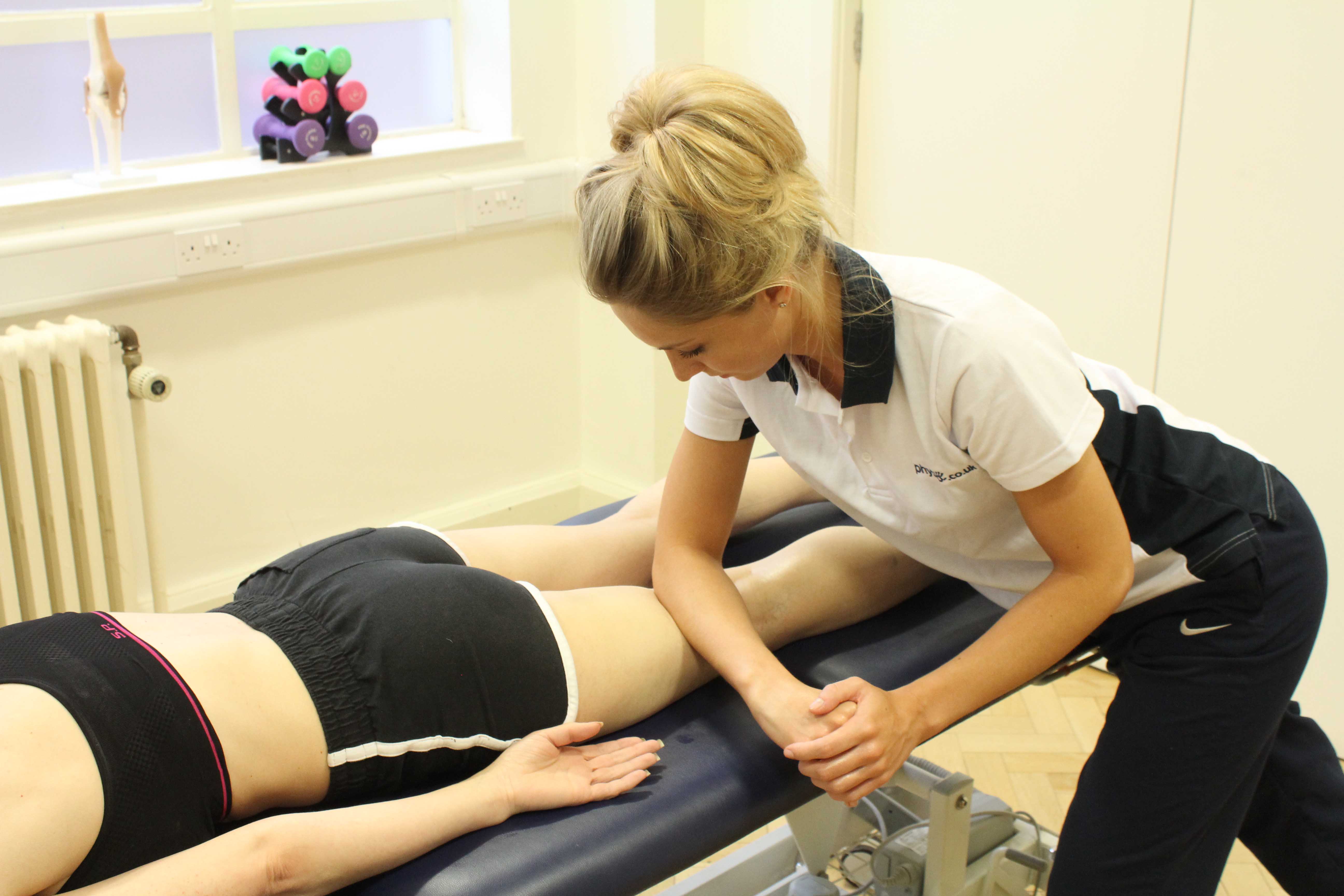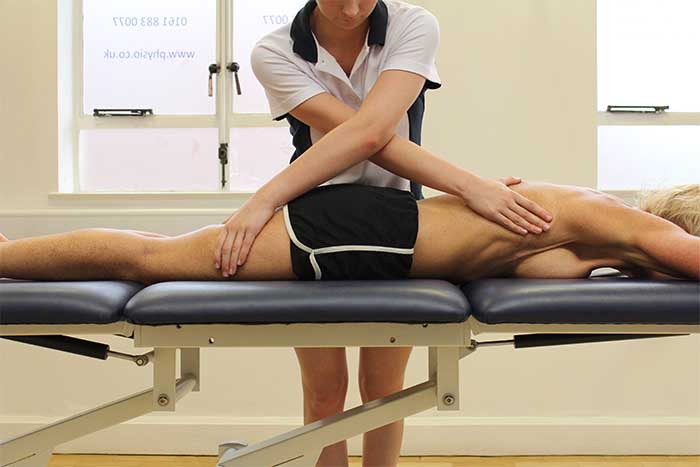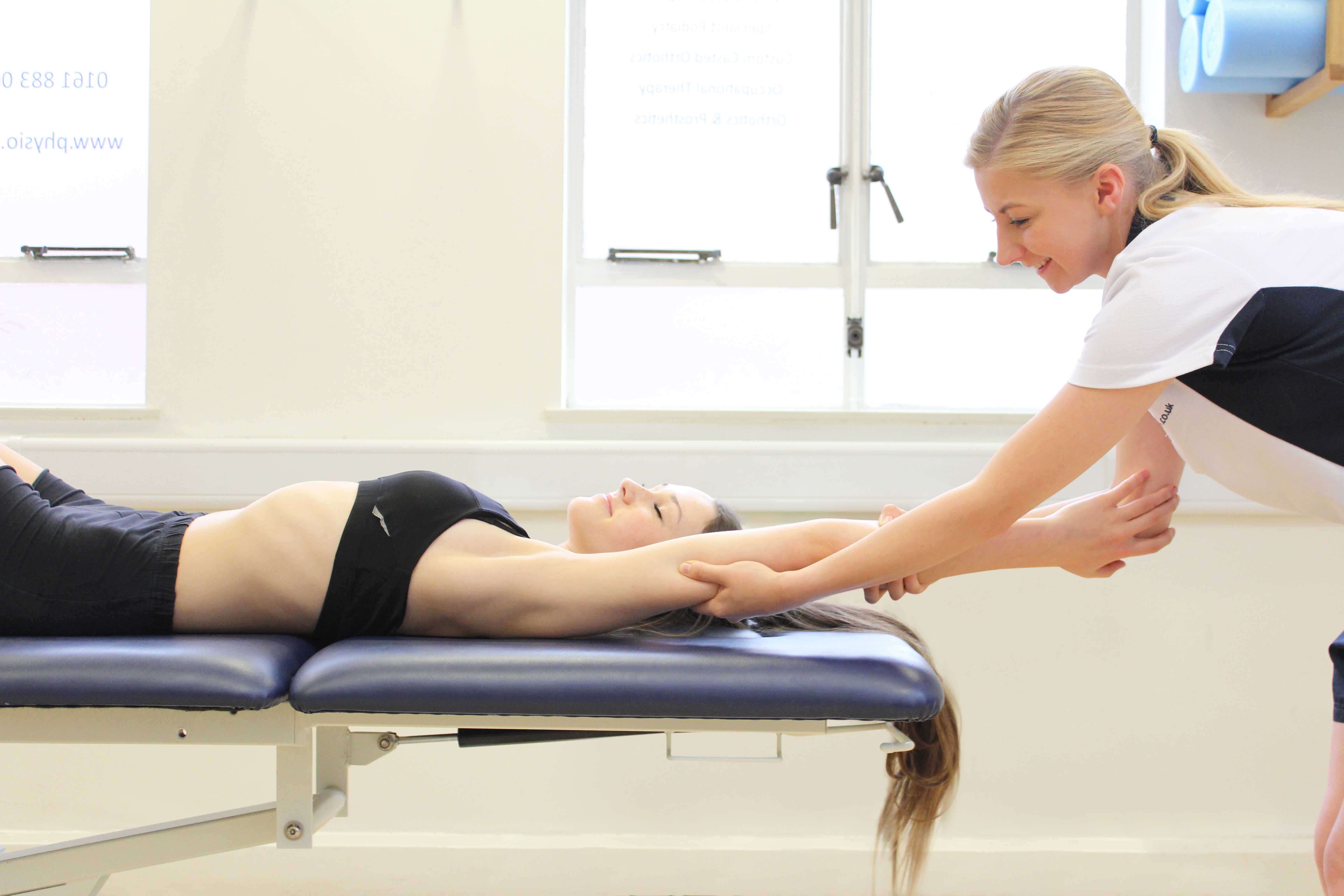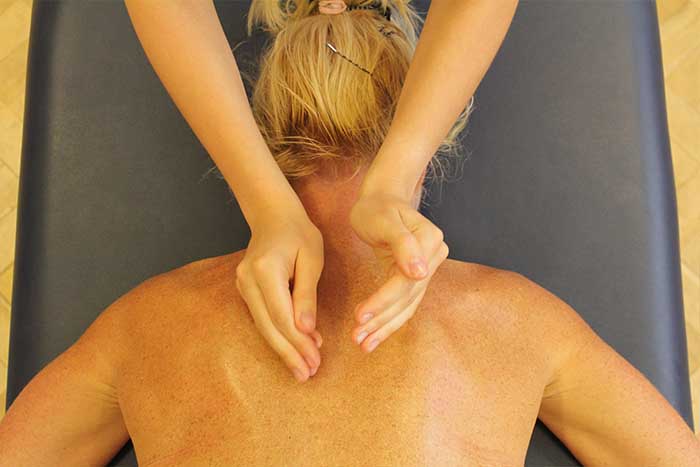A common benefit gained through sports massage is increased lymphatic drainage. Lymphatic drainage is the removal of waste products from a person's body through lymph fluid. A massage uses a variety of different techniques to help increase lymphatic drainage. Increased lymphatic drainage can help reduce swelling and increase recovery. Our massage therapists at Physio.co.uk use massage to increase lymphatic drainage to help decrease pain and reduce swelling.
What is increased lymphatic drainage?
Lymphatic drainage is the process in which the lymphatic system is stimulated and the lymph flow is increased. Lymphatic drainage aids in the removal of waste products from tissues back into the blood flow and out of a person's body. When lymphatic drainage is increased, the rate at which waste products are removed within the lymph fluid is also increased. A sports massage aims to use a variety of techniques to increase lymphatic drainage. The direction of the techniques used is towards various nodes and glands located within the body as this is where the waste products are removed from. Increasing lymphatic drainage through massage can help treat a variety of conditions including lymphedema and delayed onset muscle soreness.
 Above: Deep tissue massage to the quadricep muscles to improve lymphatic drainage and circulatory flow
Above: Deep tissue massage to the quadricep muscles to improve lymphatic drainage and circulatory flowWhat are the benefits of increased lymphatic drainage?
Increased lymphatic drainage has many benefits. Benefits of increased lymphatic drainage include:
Improved recovery is a benefit gained when lymphatic drainage is increased. After an injury has occurred, common effects include swelling, fatigue and weakness. The effects of injury are often caused by a build-up of metabolic wastes within muscle tissues. A build-up of waste products can slow down recovery and increase pain. Lymphatic drainage encourages the stimulation of the lymphatic system. The lymphatic system consists of a series of lymph vessels. Lymph fluid containing metabolic wastes travels through lymph vessels to be removed from the body. Stimulating the lymphatic system through lymphatic drainage helps to remove metabolic wastes from the injury site more efficiently. A decrease in metabolic wastes reduces swelling, fatigue and weakness, therefore improving recovery.
A common benefit of increased lymphatic drainage is reduced swelling. Swelling is a build-up of excess fluids and metabolic wastes that surround an area to protect it from further damage or infection. Swelling can be caused by many things. The most common causes of swelling include injury and surgery. Swelling can increase pain and slow down healing if left untreated. Lymphatic drainage aims to remove excess fluids and metabolic wastes through the lymphatic system. Lymphatic drainage involves slowly pushing the fluids within swelling towards glands and nodes where the fluids can be removed from the body. By slowly pushing the excess fluids towards the glands and nodes, swelling is reduced. Reducing swelling also decreases pain.
Increased lymphatic drainage can improve circulation. Circulation of the lymphatic system can often become inefficient and sometimes blocked. An inefficient lymphatic system can result in a build-up of waste products and toxins within the muscles. A build-up of waste products and toxins can cause delayed onset muscle soreness, swelling, muscular fatigue, weakness and pain. During a massage, lymphatic drainage stimulates the lymphatic system and increases lymph flow. Increasing lymph flow improves the efficiency of the lymphatic system. A more efficient lymphatic system can reduce the effects of delayed onset muscle soreness and decrease swelling, muscular fatigue, weakness and pain.

What techniques are used to increase lymphatic drainage?
A variety of techniques can be used to increase lymphatic drainage. Common techniques used to increase lymphatic drainage include:
 Above: Massage can help with lymphatic drainage for individuas who may have affected lymph nodes following surgery.
Above: Massage can help with lymphatic drainage for individuas who may have affected lymph nodes following surgery.Effleurage is a common technique used to increase lymphatic drainage. Effleurage is a technique performed using flat hands and fingers. Long, directional strokes are used during effleurage aiming to increase the temperature of soft tissues. Effleurage encourages an increase in blood flow around the treatment area. An increase in blood flow helps to raise muscle temperature. Using effleurage also stimulates the lymphatic system to help prepare the muscles for lymphatic drainage.
Compression is often used to increase lymphatic drainage. Compression is where a firm pressure is placed onto the treatment area aiming to increase circulation. Circulation of both blood and lymph flow can be increased, helping to increase muscle temperature, increase muscular health and reduce the amount of metabolic wastes built up within a muscle. Compression stimulates the lymphatic system in order to increase lymph flow and therefore encourage an increase in lymphatic drainage. Increasing lymphatic drainage through compression helps to maintain healthy muscles, decrease swelling and reduce pain.
Lymphatic drainage can be increased through skin rolling. Skin rolling is where skin is picked up using finger tips and thumbs and rolled between the fingers. Skin rolling helps to increase circulation, stretch muscles and fascia tissues, and decrease muscle tightness and tension. Skin rolling can be performed with varied pressure depending on the type of condition that is being treated and on how painful it is to touch the treatment area. Skin rolling helps to stimulate an increase in lymphatic flow which helps remove waste products and toxins more efficiently from muscles, reducing muscular fatigue, pain and weakness. Increasing lymphatic flow therefore increases lymphatic drainage.

What situation would increased lymphatic drainage help?
Increased lymphatic drainage can help in many different situations. Situations in which increased lymphatic drainage can help include:
Increased lymphatic drainage can help acute pain, post surgery and relaxation.
Lymphatic drainage can help treat acute pain. Pain can occur for many reasons. The most common causes of pain are injury and surgery. After injury or surgery, swelling and muscular fatigue can occur, increasing pain. Lymphatic drainage aims to reduce pain by decreasing swelling and muscular fatigue. During a massage, temperature of muscles increases due to an improvement in circulation. As well as further increasing muscle temperature, lymphatic drainage increases the circulation of the lymphatic system. Increasing muscle temperature allows the muscle to relax, decreasing muscular tension and pain. Increasing the circulation of the lymphatic system allows an increase in waste products such as lactic acid to be removed from the body. Decreasing waste products helps to reduce muscular fatigue. Lymphatic drainage also helps to push excess fluids and wastes in the direction of glands. Pushing excess fluids towards glands enables swelling to reduce as the fluids and waste products are removed from the body. Decreasing muscular fatigue and swelling reduces pain.
Lymphatic drainage can help reduce the effects of surgery. After surgery a build-up of metabolic wastes can occur. A common effect of surgery is lymphedema. Lymphedema is caused when the lymph nodes are removed during surgery, resulting in swelling due to the restriction of lymph flow. Lymphatic drainage helps to reduce the effects of lymphedema and therefore surgery. Lymphatic drainage stimulates the lymphatic system to help remove the build-up of waste products more efficiently. Lymphatic drainage also helps to begin the process of removing excess fluids. The removal of waste products and excess fluids helps to decrease swelling and therefore the effects of lymphedema and surgery.
Relaxation can be increased when lymphatic drainage is increased. When a build-up of metabolic wastes occur, muscles tend to tighten and tense resulting in muscular knots. Muscular knots and tightness can increase pain. When an increase in pain occurs, this may cause a person to have a restriction in movement and an unhealthy sleeping pattern due to being unable to get in a comfortable position. A restriction in movement and unhealthy sleeping pattern can increase stress and therefore decrease relaxation. Waste products are removed within the lymph flow when lymphatic drainage is used. The removal of waste products enables tension and tightness to reduce and muscles to relax. Relaxation of the muscles decreases pain and allows a person to physically and mentally relax.
Summary
Increased lymphatic drainage is where the lymphatic system is stimulated and waste products are removed through lymph flow. Lymphatic drainage is increased using a variety of techniques including effleurage, compression and skin rolling. Increased lymphatic drainage can improve recovery, reduce swelling and improve circulation. Relaxation is increased and many conditions can be treated when lymphatic drainage is increased including acute pain and the effects of surgery. Our massage therapists at Physio.co.uk use sports massage to increase lymphatic drainage to help increase relaxation, reduce pain and increase healing.
How can I arrange a sports massage for increased lymphatic drainage?
The easiest way to arrange a sports massage for increased lymphatic drainage at Physio.co.uk is to email us at office@physio.co.uk or call us on 0800 033 7800.
Alternatively if you have any questions please feel free to contact us.
We offer a 7 day service and provide home and clinic appointments.

 0330 088 7800
0330 088 7800


































